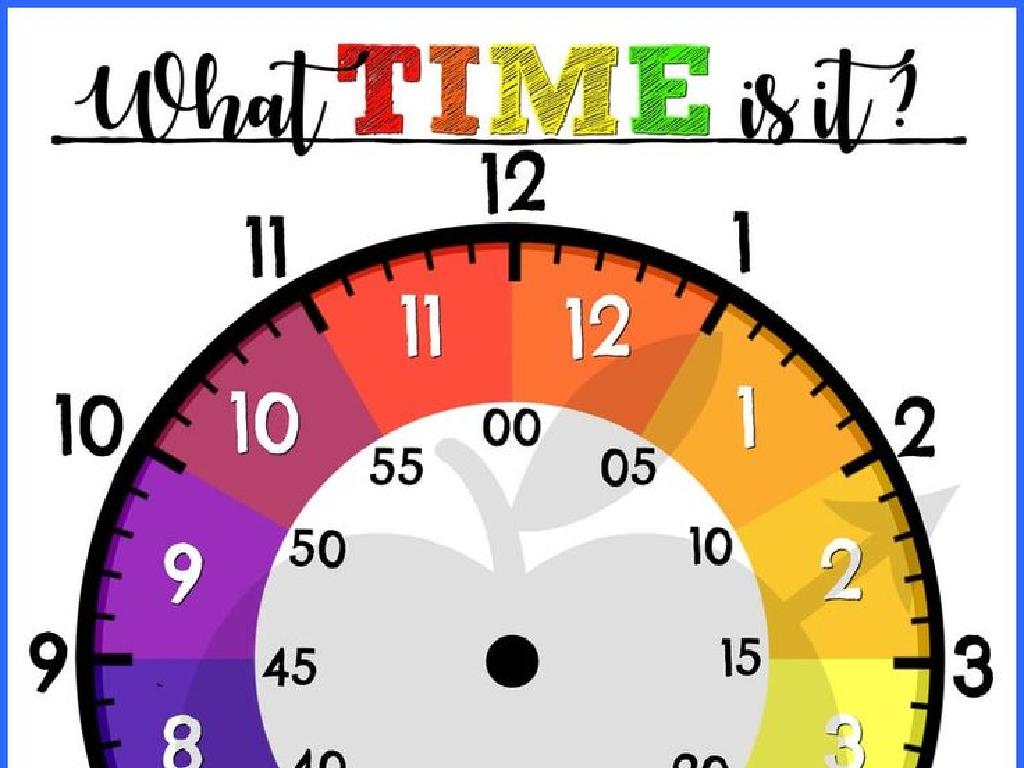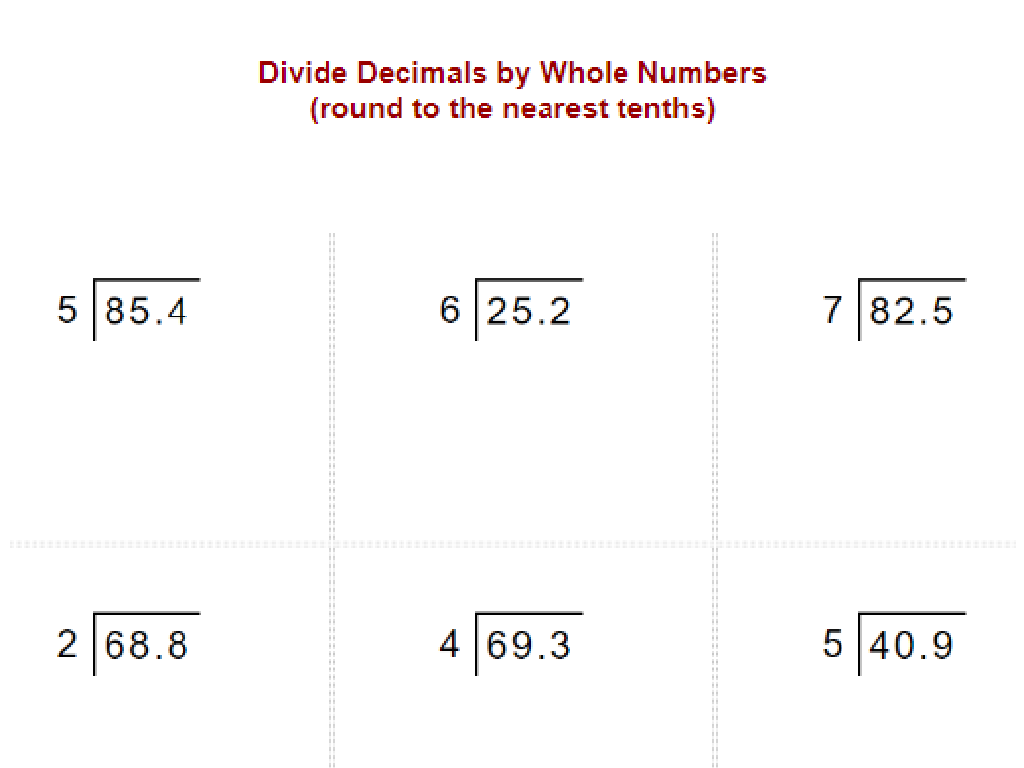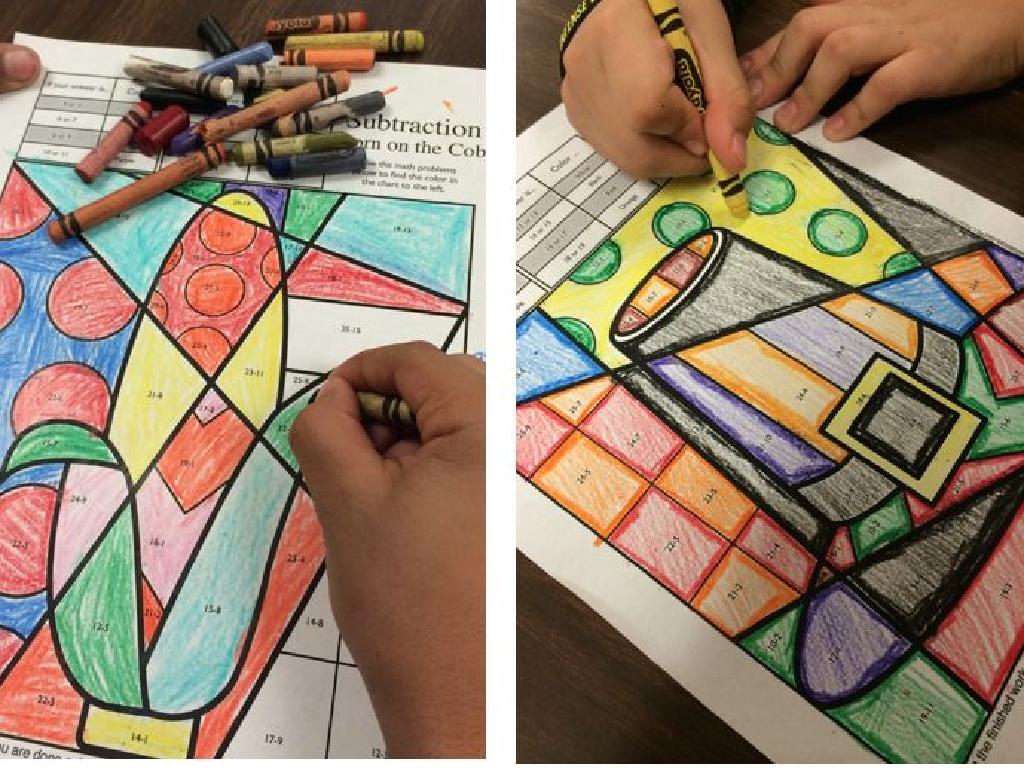Even Or Odd: Addition Patterns
Subject: Math
Grade: Third grade
Topic: Addition Properties
Please LOG IN to download the presentation. Access is available to registered users only.
View More Content
Even and Odd Numbers: A Quick Review
– Welcome to our Math class!
– Understanding Even and Odd Numbers
– Even numbers end in 0, 2, 4, 6, or 8
– What are Even Numbers?
– Odd numbers end in 1, 3, 5, 7, or 9
– What are Odd Numbers?
|
Begin the class with a warm welcome and an introduction to the concept of even and odd numbers. Explain that even numbers are those which can be divided by 2 without leaving a remainder, and they always end in 0, 2, 4, 6, or 8. Odd numbers, on the other hand, cannot be evenly divided by 2 and end in 1, 3, 5, 7, or 9. Use simple examples like counting objects or using a number line to illustrate the concept. This will set the foundation for understanding addition patterns involving even and odd numbers.
Exploring Even & Odd Addition Patterns
– Adding Even + Even numbers
– Two even numbers always make an even number, like 2 + 4 = 6.
– Adding Odd + Odd numbers
– Two odd numbers always make an even number, like 3 + 5 = 8.
– Predicting Even + Odd results
– An even and an odd number always make an odd number, like 2 + 3 = 5.
– Understanding addition patterns
|
This slide aims to help students recognize and predict the outcomes of adding even and odd numbers. Start by explaining that even numbers are divisible by 2, while odd numbers are not. Show that adding two even numbers or two odd numbers always results in an even number. Conversely, when an even and an odd number are added together, the result is always odd. Use examples to illustrate each case and encourage students to think of their own examples. Have them practice with different numbers to solidify their understanding of these patterns.
Visualizing Even & Odd Addition
– Adding even numbers together
– Like two pairs of shoes, even + even is always even
– Adding odd numbers together
– Like pairs of socks, odd + odd results in even
– Mixing even and odd numbers
– One shoe plus one sock, even + odd equals odd
– Understanding patterns
|
This slide is designed to help third graders visualize and understand the patterns that emerge when adding even and odd numbers. Use real-life examples like pairs of shoes (even numbers) and pairs of socks (odd numbers) to illustrate the concept. Explain that adding two even numbers (like two pairs of shoes) always results in an even number. Similarly, adding two odd numbers (like two pairs of socks) also results in an even number. However, when you mix one even and one odd number (like one shoe and one sock), the result is always odd. Encourage students to think of other even and odd items they could add together to reinforce the concept. This hands-on approach makes abstract concepts more concrete and understandable for young learners.
Even or Odd: Addition Patterns
– Adding numbers on a number line
– Use a number line to visually add numbers together
– Even plus Even equals what?
– When you add two even numbers, the result is also even
– Odd plus Odd equals what?
– Adding two odd numbers together gives you an even number
– Even plus Odd equals what?
– An even number added to an odd number results in an odd number
|
This slide introduces students to the concept of addition patterns, specifically focusing on how even and odd numbers behave when added together. Start by demonstrating how to use a number line to add two numbers. Then, guide students to discover the patterns that emerge when adding even and odd numbers. For example, show that adding two even numbers (like 2 + 4) always results in an even number (6), while adding two odd numbers (like 3 + 5) also results in an even number (8). Finally, illustrate that an even number plus an odd number (like 2 + 3) equals an odd number (5). Encourage students to test these patterns with different numbers and to explain their findings. This understanding of number patterns lays the groundwork for more complex arithmetic operations.
Group Activity: Discovering Addition Patterns
– Work together in small groups
– Use number cards to explore
– Find patterns in adding numbers
– Look for even + even, odd + odd, and even + odd
– Share your patterns with the class
|
This group activity is designed to help students recognize patterns in addition, particularly with even and odd numbers. Divide the class into small groups and provide each group with a set of number cards. Instruct them to experiment with adding different numbers together to see what patterns emerge. Guide them to notice that even numbers added together always result in an even number, and the same for odd numbers. When an even and an odd number are added, the result is always odd. After the exploration phase, each group will present their findings to the class. This activity encourages teamwork, discussion, and critical thinking about numerical patterns. For the teacher: Prepare sets of number cards in advance, ensure each group has a mix of even and odd numbers, and facilitate the activity by asking probing questions to help students articulate the patterns they discover.
Class Activity: Even or Odd Relay
– Get ready for the Even or Odd Relay!
– Split into two teams and line up
– Take turns adding numbers quickly
– Write ‘Even’ or ‘Odd’ on the board
|
This activity is designed to help students practice identifying even and odd numbers through a fun and interactive relay game. Divide the class into two teams and have them line up. Each student will take turns quickly adding two numbers together. After they find the sum, they will run to the board and write whether the result is even or odd. This will help reinforce the concept that even numbers end in 0, 2, 4, 6, or 8, while odd numbers end in 1, 3, 5, 7, or 9. Possible variations of the activity could include using dice to generate random numbers for addition, having a mix of single-digit and double-digit numbers, or introducing a ‘challenge’ round with larger numbers. The key is to keep the activity energetic and ensure all students are engaged.
Conclusion: Even & Odd Addition Patterns
– Summarize today’s addition patterns
– Importance of Even/Odd patterns
Knowing these patterns helps in mental math and predicting results.
– Homework: 5 Even + Odd examples
Look for items at home to pair up and add.
– Review in next class
|
Today, we’ve learned how to identify and add even and odd numbers, observing the patterns that emerge. Understanding these patterns is crucial as it lays the foundation for number sense and arithmetic skills, which are essential for more advanced math concepts. For homework, students should find pairs of even and odd items at home to add together, reinforcing the concept that even plus odd will always result in an odd number. In the next class, we’ll review these examples and discuss any questions the students may have. This will help ensure that the students have grasped the concept and can apply it to different scenarios.






